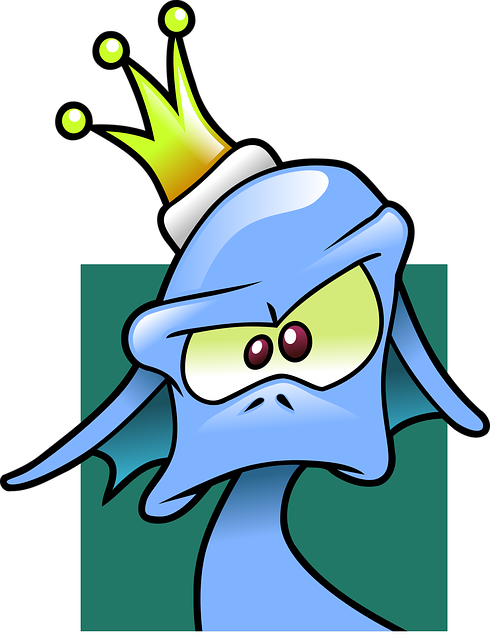Every great thriller needs the correct type of conflict to drive and captivate its audience, and one of the most potent elements of conflict lies in its internal form. This blog post covers learning to define and utilize internal conflict in your thriller writing—a skill that can unlock excellent storytelling potential!
Dive into understanding how to explore the depths of character and emotion to create compelling plots by looking at how internal conflict works.
Recognize the core of the conflict

What does your protagonist’s internal conflict stem from, and what is at stake for them to reach their goal?
At the core of the character’s internal conflict is the struggle between their inner goals and desires versus the external conflicts they face to reach their destination.
This type of conflict is about acknowledging what drives your protagonist and how this can be contrasted against their external conflict or personal flaws that threaten to prevent them from achieving their aim. Getting into the depths of who your protagonist is is essential to create believable and compelling inner conflict.
When setting up the internal conflict within a thriller, it can help to think of two sides of yourself—where do you stand on specific issues? Identify those positions and see how they contrast each other—this will provide insight into how your characters should navigate their conflicting needs and desires.
An example might be a law enforcement officer torn between upholding justice despite personal relationships involved or perhaps someone trying to survive and thrive despite their circumstances. Both scenarios present problems that your protagonist must grapple with internally before taking any action outside that might put them at risk.
Draw on human emotion

When it comes to character development for a thriller, one of the most essential elements is to realize what internal conflicts they are dealing with. It could be moral conflict, political conflict, or societal conflict, to name a few.
Don’t be afraid to explore the darker sides of human emotion.
Internal conflicts are vital for building tension within a thriller, and to do this effectively, you need to draw on a range of human emotions. Fear, guilt, insecurity, and even depression can all be utilized significantly when exploring the depths of inner conflict in your story.
By deeply diving into how different emotions affect your characters’ decision-making, you can create intense and believable scenes that will leave readers gripping their seats!
For example, in The Mummy, Tom Cruise realizes his mistakes earlier due to conflicting loyalties, which results in him sacrificing everything he has worked hard for—only then does he finally get redemption through taking responsibility! Here two forces (inner struggles) clash against each other but ultimately come together, giving rise to heroic acts—not because they have no choice but because they consciously chose to do something selfless despite facing immense odds.
Use conflict as a tool
How to use a character’s inner turmoil to create tension and propel the story forward
When characters experience internal conflict, their internal struggles can add momentum to the plot by creating tension and suspense.
Show the audience how your protagonist faces inner battles that cause them to make difficult decisions while trying to overcome their biggest obstacles in life. This will engage readers with the story as they become invested in seeing how the character’s inner turmoil affects the outcome.
Develop a resolution

How your protagonist will resolve their inner conflict and find a way to reach their goal
Internal conflict is an essential element of creating thrilling and captivating stories, and utilizing it correctly can add a powerful dynamic to your work. Recognizing this vital element of conflict can unlock the power to write stories that enthrall readers!
Resolving internal conflict largely depends on how well you have developed your character. It would be best to ensure that the protagonist’s inner struggles are believable and relatable and that they come to a satisfying conclusion. Whether it’s through a hard-fought battle or by learning from their mistakes, it’s essential that they can resolve their inner struggle to reach the desired outcome.
Alan Silvestri’s thriller The Negotiator (1998) is a stellar example. In the movie, negotiator Danny Roman (Samuel L. Jackson) finds himself caught in an impossible situation: framed for murder by his police department and cornered into a “suicide pact” with another negotiator Chris Sabian (Kevin Spacey).
Eventually, Danny realizes corrupt cops have set him up to cover up their crimes. Still, rather than give up or fight alone, he learns how to trust within himself and make allies out of those around him—even his former enemies. He then uses his newfound skillset to expose those responsible for framing him and bring justice back into his life before ultimately bringing a peaceful end to the situation.
Although Danny starts as an underdog with seemingly no way out, viewers can see how far he has grown when they finally witness him get vindication against all odds—the true hallmark of any hero story!
Create an uplifting resolution
Find a way to bring about positive change in your characters’ inner conflict
The resolution of the internal conflict should ultimately be uplifting and show how the character has grown from their experiences. Show readers how your protagonist has come to terms with their inner struggles and learned a lesson or gained new insight from the experience. Creating an uplifting resolution can help readers feel connected to your characters more meaningfully.
Internal conflict is one of the most powerful tools for creating an engaging, suspenseful thriller, so don’t be afraid to explore this powerful element of conflict in your work. By taking the time to understand how to use it effectively, you can unlock fantastic storytelling potential!
To craft this type of story, looking at internal conflict examples from successful thrillers is helpful.
Look for moments where characters are struggling with inner turmoil and how they eventually find resolution. Consider the following tips when crafting your internal conflicts:
- Focus on acknowledging what drives the protagonist and use this knowledge to create an internal struggle they must overcome.
- Use flashbacks to show readers how a character’s past experiences have shaped their current mindset.
- Explore the emotional stakes of the conflict—what happens if your protagonist fails?
- Incorporate external forces that complicate their journey toward resolution.
- Show how the character’s inner struggles influence their actions and drive the story forward.
Conclusion
To wrap it up, remember that conflict can be a great teaching tool. It helps us learn how to mediate disagreements and develop meaningful relationships with one another. While it may feel challenging at the moment, by working through conflicts, we can understand the issue’s core and create an uplifting resolution that will strengthen us rather than divide us.
Hopefully, this blog post helped you understand how to use conflict to work towards personal growth and flourishing, favorable resolutions for everybody involved.
Thank you for taking the time to read. May you find success and joy in all that you create.
If you’re working on your first novel and are looking for more help with your writing, please check out my other articles at https://ullahakanson.com/blog/
Best of luck with your writing!
Ulla
www.ullahakanson.com

